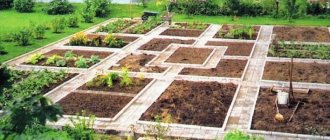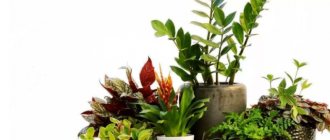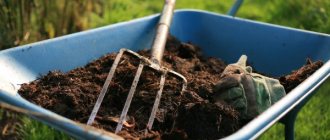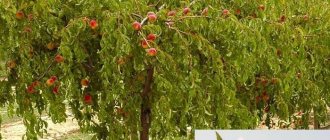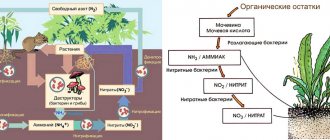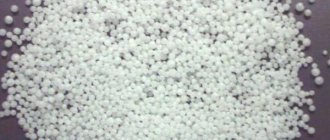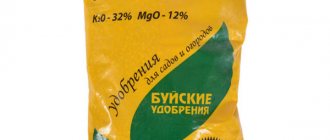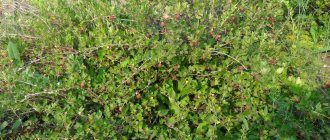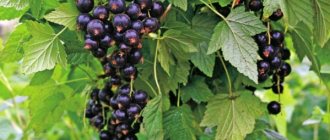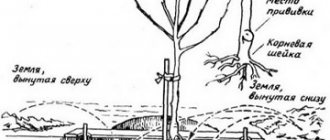General requirements for soil mixtures
Almost all soil mixtures contain peat. True, it is simply ineffective as a fertilizer, since it contains a low amount of nutrients. The exception is nitrogen: its content is high, but it is difficult to assimilate by cultivated crops. Earthen peat should be used only in combination with other beneficial substances.
When collecting peat yourself, it is important to consider that only the one that is at depth can be used for plants. The top layer is not suitable because its pH is very high. But there is a separate spectrum of plants that need peat with a high level of acidity. These are flowers: hydrangea, rhododendron, and also blueberry.
Peat can be used alone if the land itself at the dacha contains a lot of clay and sand. Then it won't hurt to dilute them. But if the land is fertile, then adding peat alone without other nutrients will be absolutely useless.
The soil mixture must meet all those characteristics that are necessary for the normal growth and development of seedlings:
- Freely allow the required amount of moisture and air to pass through.
- Contain the right amount of nutrients. However, it is important to remember that their excess harms the seedlings.
- Be loose.
- Have a neutral or slightly acidic level.
- Must not contain fungal spores, harmful microorganisms (including insect eggs and larvae), weed seeds and any toxic substances.
It is strictly prohibited to use ready-made soil for seedlings in greenhouses and greenhouses if it was previously used for growing tomatoes and peppers.
What should not be in the soil for seedlings
Despite the “living” microflora, the soil should not contain insect larvae, weed seeds, or harmful microorganisms. The soil should not contain toxic substances, clay or other compounds unsuitable for growing seedlings. You should also pay attention to the presence of organic components in the soil. An excess of such elements will negatively affect plant health, because the soil will intensively lose nitrogen. In addition, decomposing substances contribute to an increase in soil temperature, which will lead to disease or, even worse, death of the plant root system.
Green manure to help
You can always see from the plants what they are missing. If the soil is low in nitrogen, the seedlings will be stunted and have small, dull leaves. When plantings lack phosphorus, they produce few shoots and take on a purple hue. With a lack of potassium, the edges of the leaves look like scorched. When plants, especially citrus fruits, lack iron, chlorosis occurs. This is a violation of the formation of chlorophyll in the leaves. They become whitish and have green streaks. At the same time, there may be a lot of iron in the soil, but plants cannot obtain it. It easily binds to calcium when watered with hard water. Here it is worth using complex fertilizers containing ferrum. It is convenient to dissolve them in water and sprinkle them on the leaves.
After harvesting, use green manure. These are plants, like white mustard, grown between vegetable crops to improve the soil.
Components that improve the quality of the soil mixture
To improve the quality of homemade or purchased soil, organic and inorganic substances can be used.
Organic
This includes additives of animal or plant origin. This could be sawdust, vegetable peelings, droppings, manure, humus, and so on. Before using organic matter to improve the properties of the soil, it needs to sit for about 6 months.
Disinfection of soil for seedlings
Often, having prepared the soil according to all the rules, after a while we notice that the seedlings begin to hurt. The main reason for this is the presence of pathogenic microflora in the soil, most often fungi. Therefore, it would be a good idea to disinfect the soil before sowing seeds.
This can be done at home in several ways.
- By freezing at low temperatures, leaving the seedlings in cold rooms where the temperature is close to outside;
- Calcination at high temperatures. To calcine the soil, spread it on a metal baking sheet in a layer of no more than 5 cm, pour boiling water over the soil, and then put it in the oven at a temperature of 70-90°C for half an hour. The temperature should not be higher than indicated, otherwise a higher temperature will lead to nitrogen mineralization and deterioration of soil quality.
- By steaming, pouring boiling water over the soil or pouring it into a colander, placing it over a pan of boiling water for 10 minutes;
- Etch with a pink solution of potassium permanganate. For more thorough treatment, antifungal drugs are used: Fitosporin, Baikal EM-1, Zamair, Vozrozhdenie;
- The soil spilled with a solution of potassium permanganate is placed in the microwave for 3 minutes, turning it on at full power.
All disinfection methods are good, but they all have one significant drawback: along with the pathogenic microflora, all the useful ones die. Therefore, such treatments are carried out 2-3 weeks before the intended use. You can store prepared and disinfected soil in an apartment until sowing seeds or picking seedlings.
Optimal timing of application
It is necessary to enrich the soil with mineral and organic substances in spring and autumn, as well as during the growing season. After the snow melts, it is recommended to add superphosphate and rotted manure, because in the initial stages of development, plants especially need nitrogen and phosphorus. If these fertilizers are not available, they can be replaced with others that have a similar composition.
It is important that there is no snow or water left in the garden at the time of fertilizing . In the middle zone, the soil is ready for spring cultivation in the second half of April. If you use fertilizers too early, there is a chance that they will be washed away by water. More precise timing depends on what types of plants the substances are applied to. The soil under the trees is fertilized a little earlier, and the beds where vegetable seeds will be sown - later.
Fertilizer for seedlings is applied immediately before planting or one day before. In both cases, the substance is first mixed with soil.
How to treat the soil before planting seeds for seedlings
By disinfecting the soil using thermal methods, some pathogenic microorganisms and insect eggs do not die. And in this case, it is useful to carry out disinfection with special means.
Fungicides are chemicals designed to combat fungal plant diseases. For this purpose, Fitosporin is used more often. To treat the soil, dilute 15 ml of working solution in 10 liters of warm water and water the soil. The following products are also used: “Planriz”, “Barrier”, “Extrasol”, “Glyokladin”.
Insecticides are chemicals designed to kill harmful insects. The following drugs are used: “Aktara”, “Inta-Vir”, “Thunder”, “Iskra”. The product is diluted in water. Before processing, the soil is loosened and moistened, and then watered with the prepared solution.
It is important to remember that any treatment with chemicals requires compliance with safety regulations and precise adherence to concentrations when administering solutions and its consumption. Treatment with products is carried out no later than 1 month before the intended sowing of seeds.
Disinfection of a small volume of soil is carried out by watering with a solution of potassium permanganate. To do this, 3-5 crystals of potassium permanganate are diluted in a small amount of water, stirred until the crystals are well dissolved, and then this solution is brought to a volume of 10 liters. Water the soil with a watering can, spending 30-50 ml per 1 square meter. m. Soil cultivation is carried out no later than 2 weeks before the proposed work.
Prepare the soil mixture for seedlings yourself
Every gardener can produce his own “turf soil”. As a result, we will have a high-quality soil mixture for planting seedlings in the spring.
- We cut the turf and place it in a stack, at least 1 m high.
- When laying, we spill slurry or simply lay it with fresh manure.
- Drying out of the stack is unacceptable. Therefore, we always keep it moist.
- Then, after a few months, the pile is shoveled. Anything large that is not rotted is discarded.
- We store the resulting soil in bags and buckets in unheated rooms until spring.
Preparation:
- 1 - 2 - 1. Turf soil - humus - sand. Here, for 10 liters of mixture, 2 cups of ash. Plus a teaspoon of superphosphate and a pinch of potassium fertilizer.
Preparing soil for different crops
There are many soil options. To choose the right one, you need to take into account the requirements of each specific culture. Tomatoes, for example, prefer slightly alkaline soil with plenty of organic matter, nitrogen and potassium. Cabbage prefers soil to which lime and wood ash have been added.
| Culture | Soil Mix Options |
| Eggplant | 1. Humus (2 parts), peat (1 part), rotted sawdust (0.5 parts). 2. Garden soil (1 bucket), ash (0.5 cups), superphosphate (1 tbsp), urea or potassium sulfate (1 tsp). |
| Cabbage | 1. Soddy soil (1 part), humus (1 part), peat (1 part). 2. Turf soil (20 parts), ash (5 parts), lime (1 part), sand (1 part). 3. Peat (12 parts), turf soil (4 parts), sand (1 part). |
| Cucumber | 1. Peat (2 parts), humus (2 parts), rotted sawdust (1 part). For every 10 liters of this mixture add 1 tbsp. ash and 1 tsp. urea, superphosphate and potassium sulfate. 2. Turf soil (1 part), compost or humus (1 part). Add 1 tbsp to a bucket of mixture. ash, 10 g of potassium sulfate and 20 g of superphosphate. 3. Peat (6 parts), humus (1 part), sawdust (1 part), sand (1 part), mullein (1 part). 4. Soddy soil (1 part), peat (1 part), humus (1 part), rotted sawdust (1 part). |
| Pepper | 1. Turf soil (1 part), humus (2 parts). 2. Peat (2 parts), humus (2 parts). 3. Humus (3 parts), turf soil (2 parts). 4. Nutritious peat soil (2 parts), turf soil (1 part). 5. Peat (4 parts), turf soil (2 parts), humus (1 part), rotted sawdust (1 part). |
| Tomato | 1. Peat (16 parts), turf soil (4 parts), mullein (1 part). Add 3 liters of river sand, 10 g of ammonium nitrate, 20-30 g of superphosphate, 10-15 g of potassium chloride to a bucket of the mixture. 2. Peat (3 parts), sawdust (1 part), mullein (0.5 parts). Add 3 liters of river sand, 10 g of ammonium nitrate, 20-30 g of superphosphate, 10-15 g of potassium chloride to a bucket of the mixture. 3. Humus (1 part), peat (1 part), turf soil (1 part), rotted sawdust (1 part). Add 1.5 tbsp to a bucket of mixture. ash, 3 tbsp. superphosphate, 1 tbsp. potassium sulfate and 1 tsp. urea. |
You can also prepare a universal soil mixture. It consists of two parts of garden soil, one part of humus or well-rotted compost, one part of peat and one part of sawdust or sand. Depending on what crop will be grown, add a certain amount of fertilizer to this substrate.
| Culture | Amount of fertilizer per 10 liters of substrate |
| Cabbage | 15-20 g ammonium nitrate or urea, 20-25 g superphosphate, 10 g potassium sulfate, 25 g dolomite flour |
| Cucumber | 8-10 g ammonium nitrate, 10-15 g superphosphate, 10 g potassium sulfate, 10 g dolomite flour |
| Tomato, pepper, eggplant | 8-10 g ammonium nitrate, 80 g superphosphate, 20-30 g potassium sulfate |
No matter how great your desire, do not sow vegetable seeds in pure humus or compost. They contain a lot of nutrients, thanks to which the seedlings quickly grow green mass and look very attractive. However, their roots develop poorly, so the plants do not take root well on the site. You should not sift the components of the soil for seedlings through a fine sieve - such a substrate will “float” after watering and will turn sour very quickly.
Mineral fertilizers
Very attractive and informative photos of soil fertilizer of a mineral sample. They are mainly packaged and contain information about the composition.
Although the old school of gardeners already knows the brightest representatives of mineral fertilizers:
- Ammonium nitrate – 24-34% nitrogen;
- Urea – 46% nitrogen;
- Superphosphate – 16-20% phosphorus;
- Double superphosphate – 41% phosphorus;
- Potassium sulfate – 50% potassium.
There are complex fertilizers that simultaneously contain nitrogen, phosphorus, and potassium. These include ammophos and nitroammophoska. All of them are presented in the form of granules.
Other more advanced mineral fertilizers are sold in powder and liquid form. In addition to the main enriching agents, they contain microelements - copper, boron, manganese, zinc, molybdenum, cobalt.
